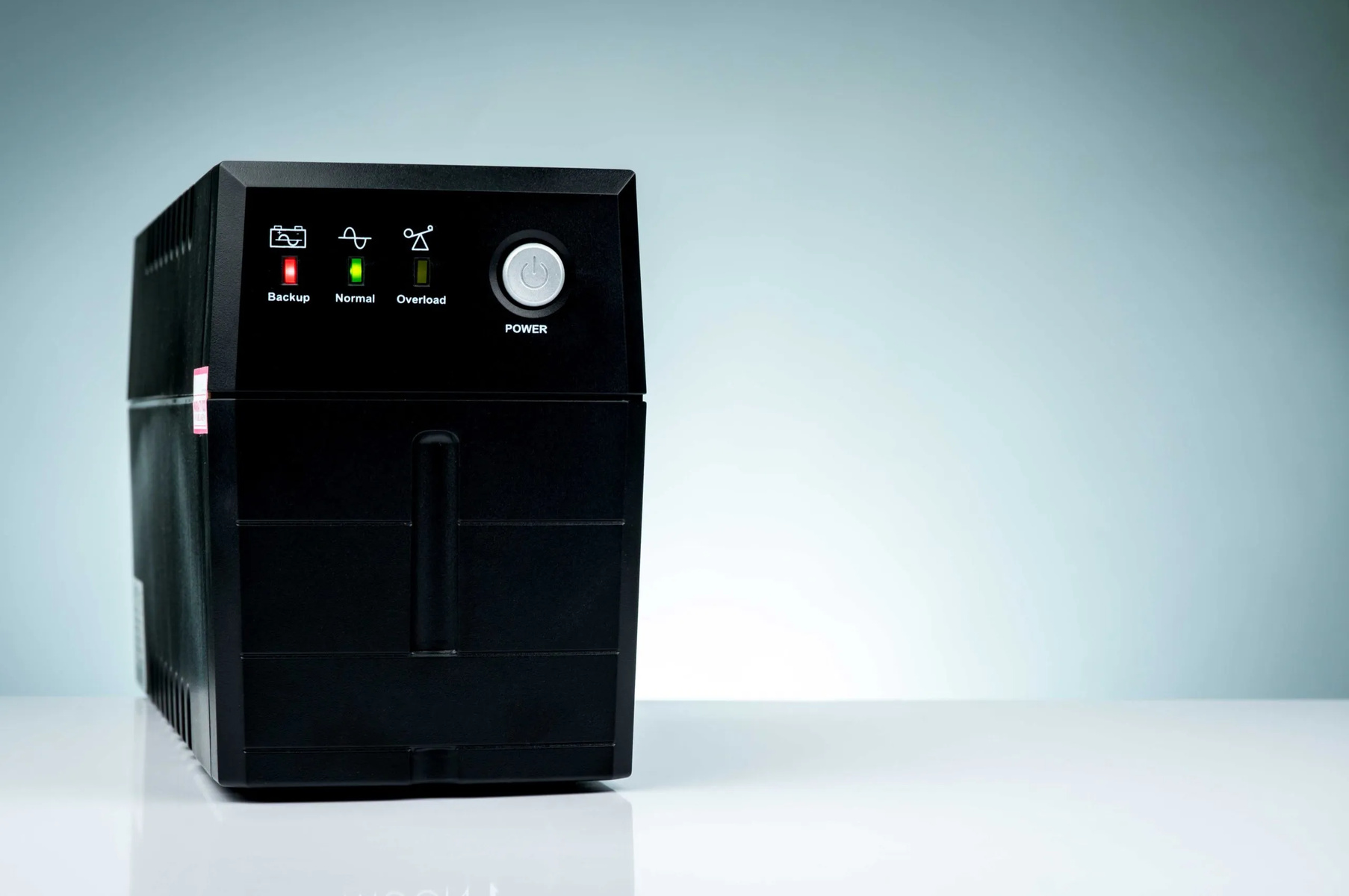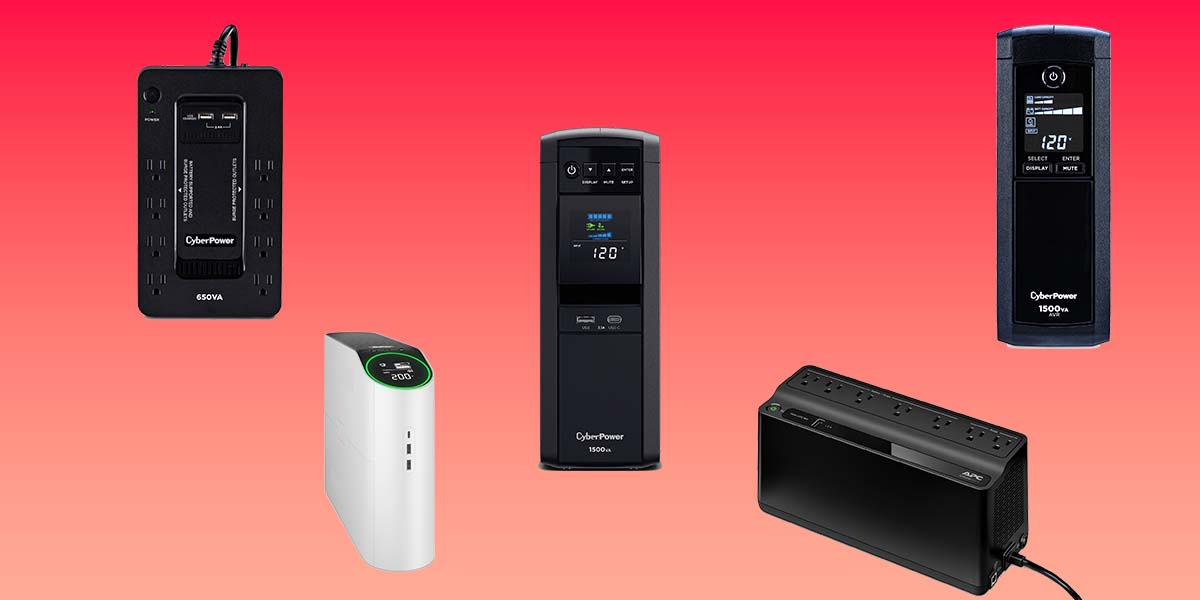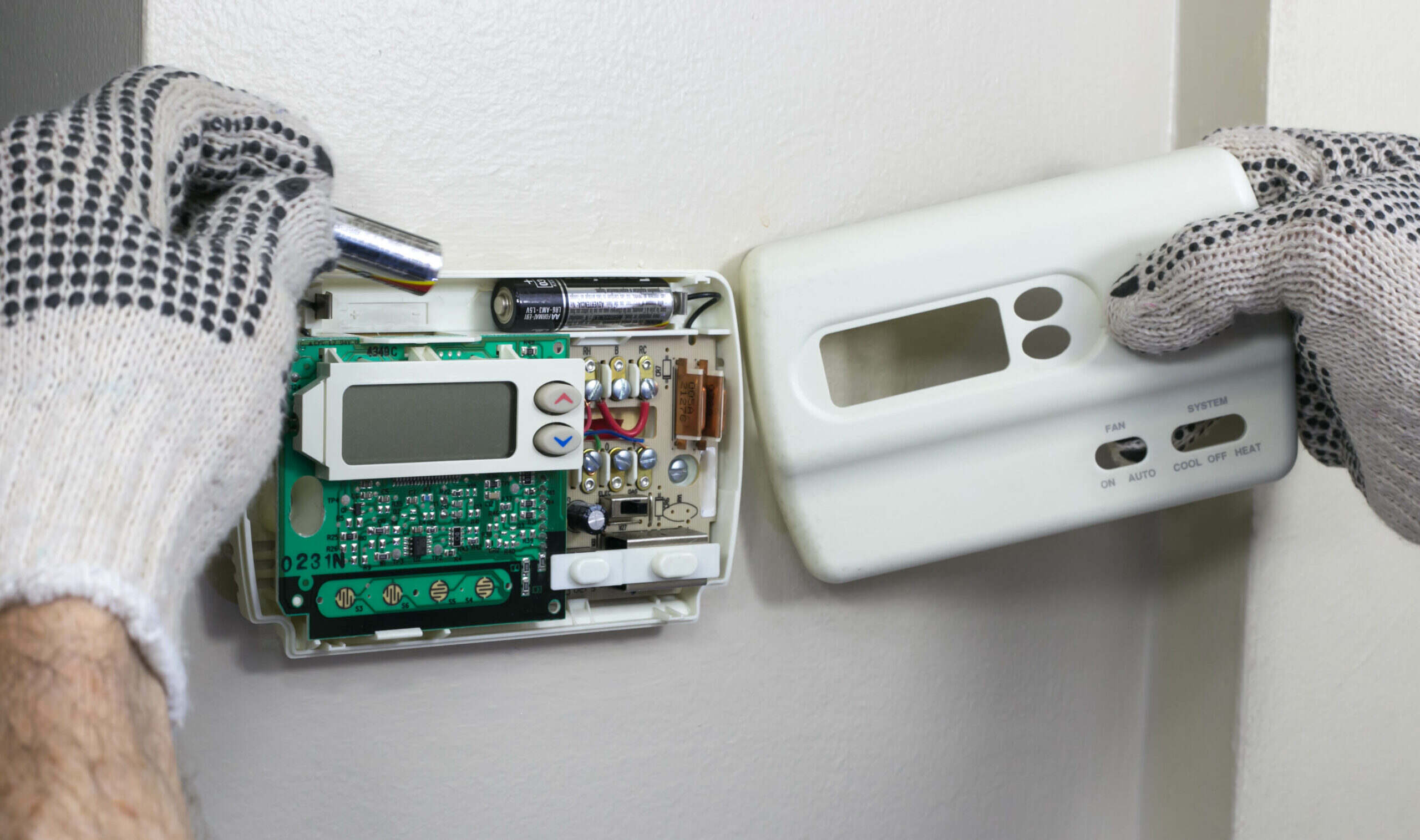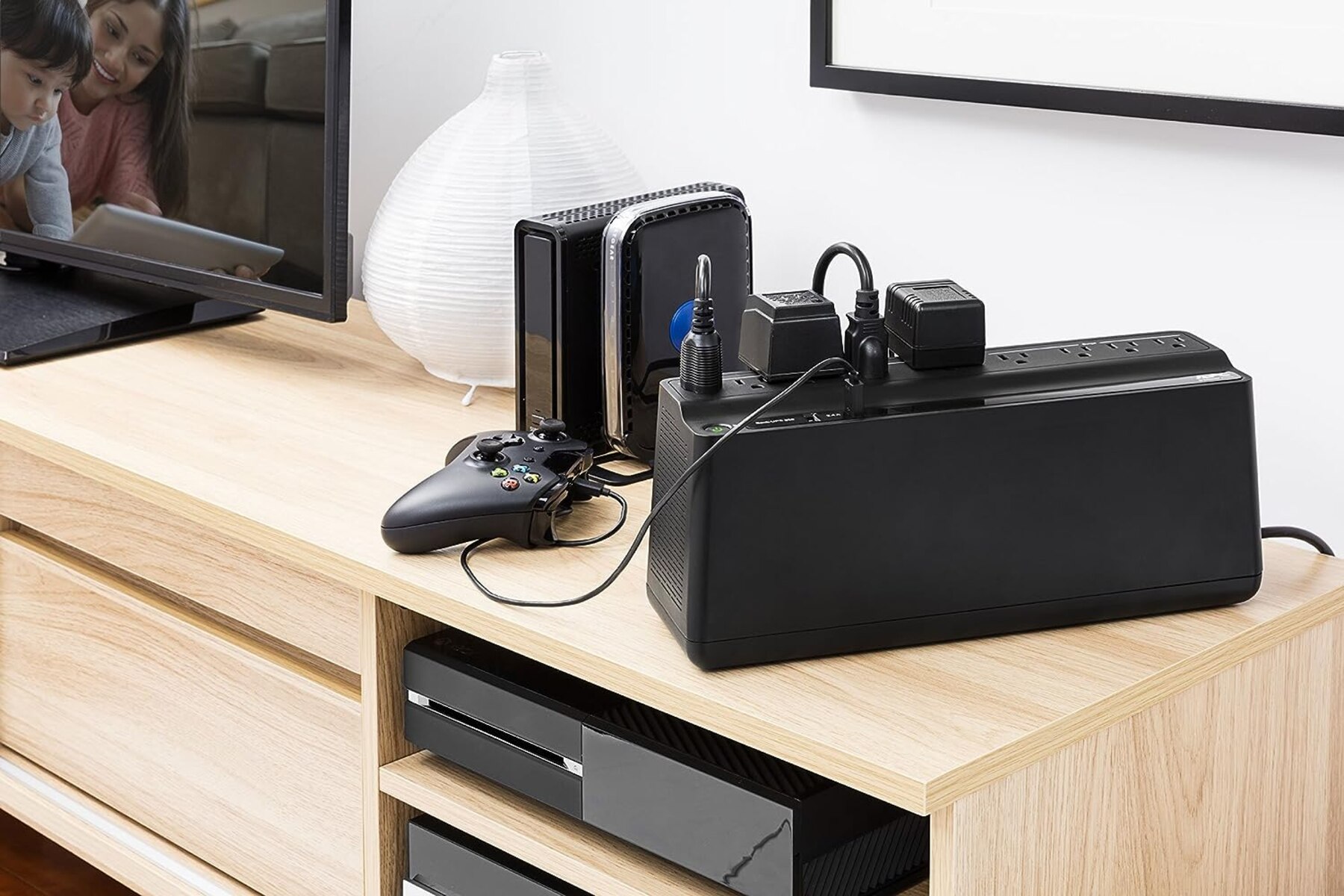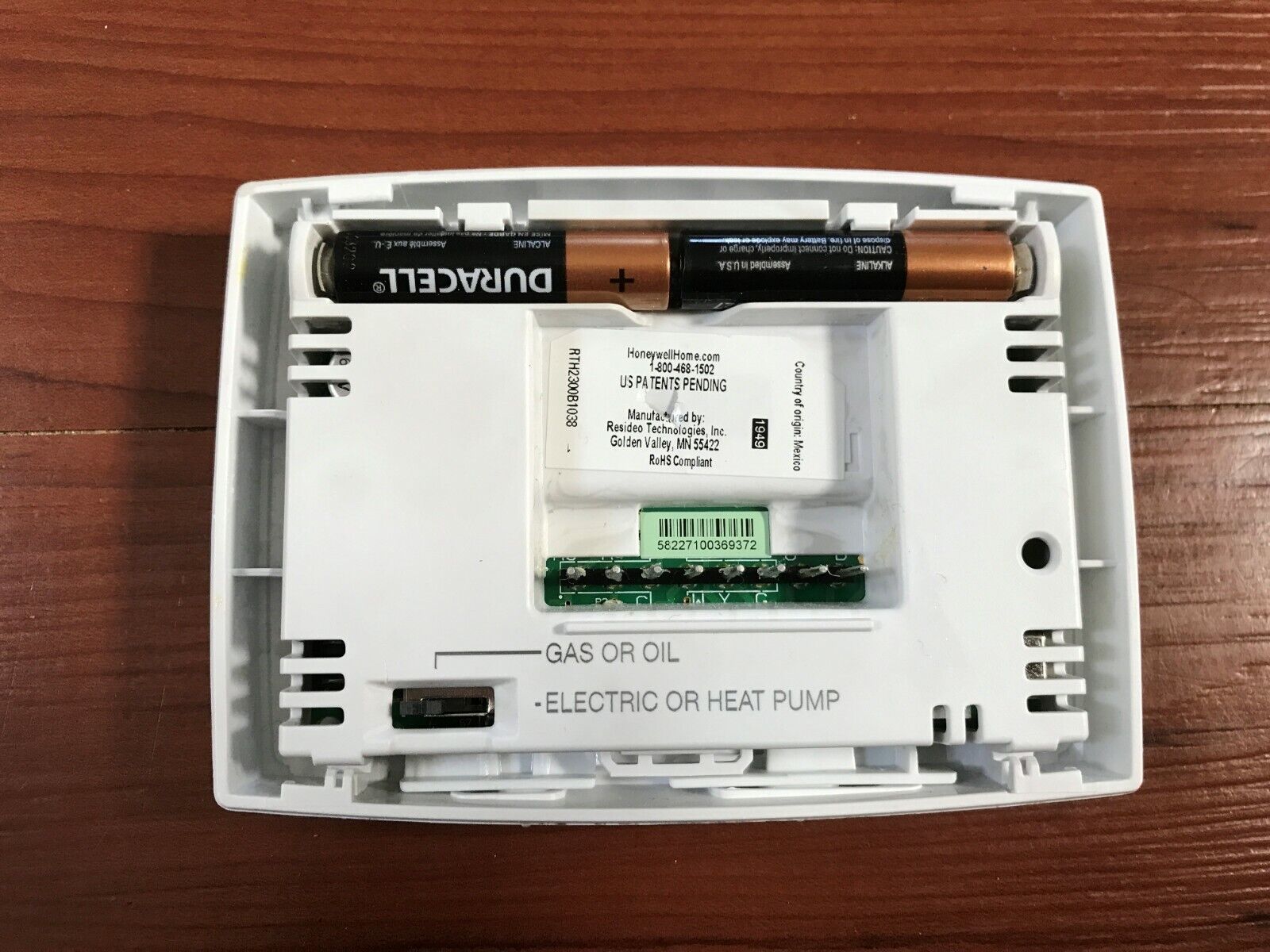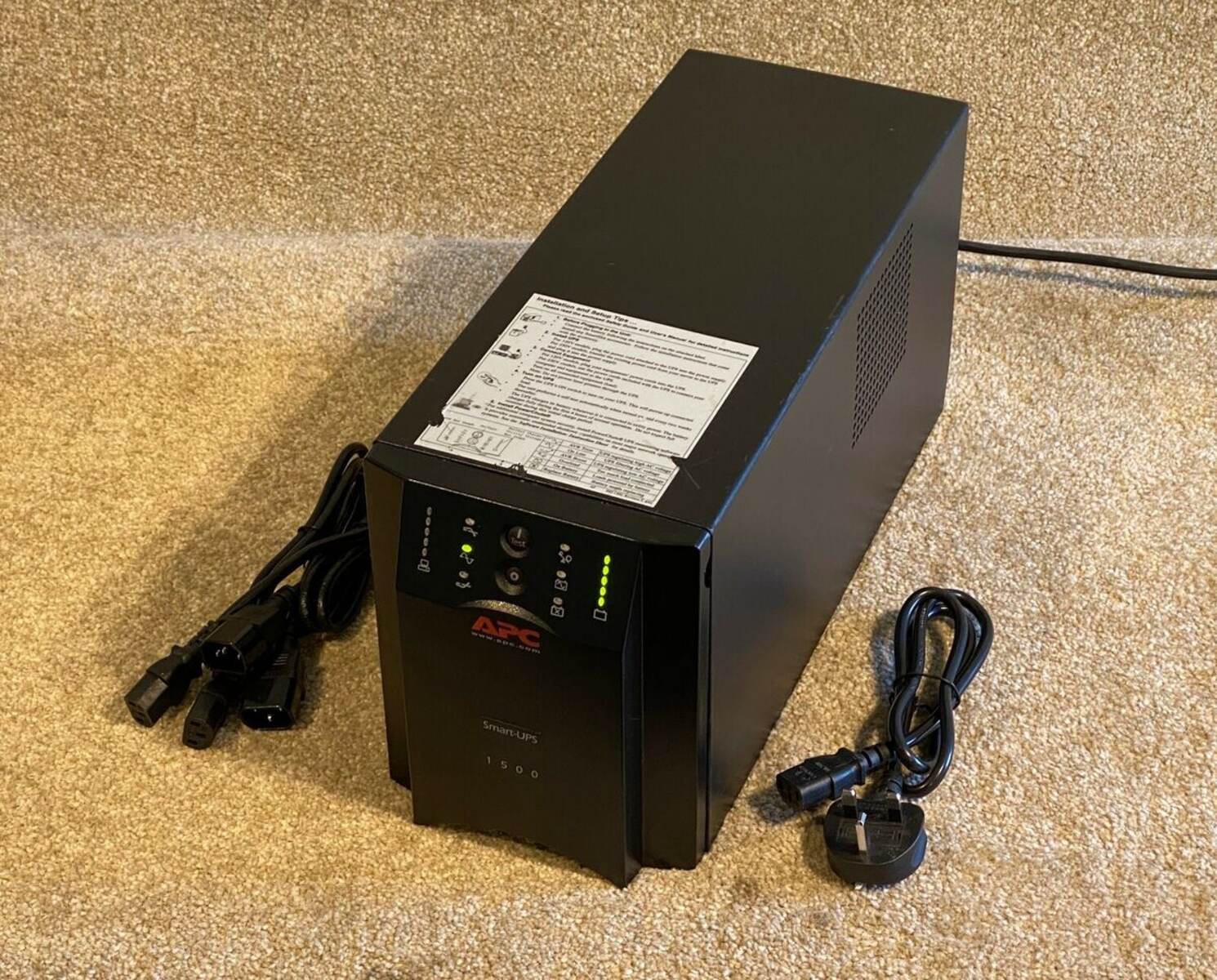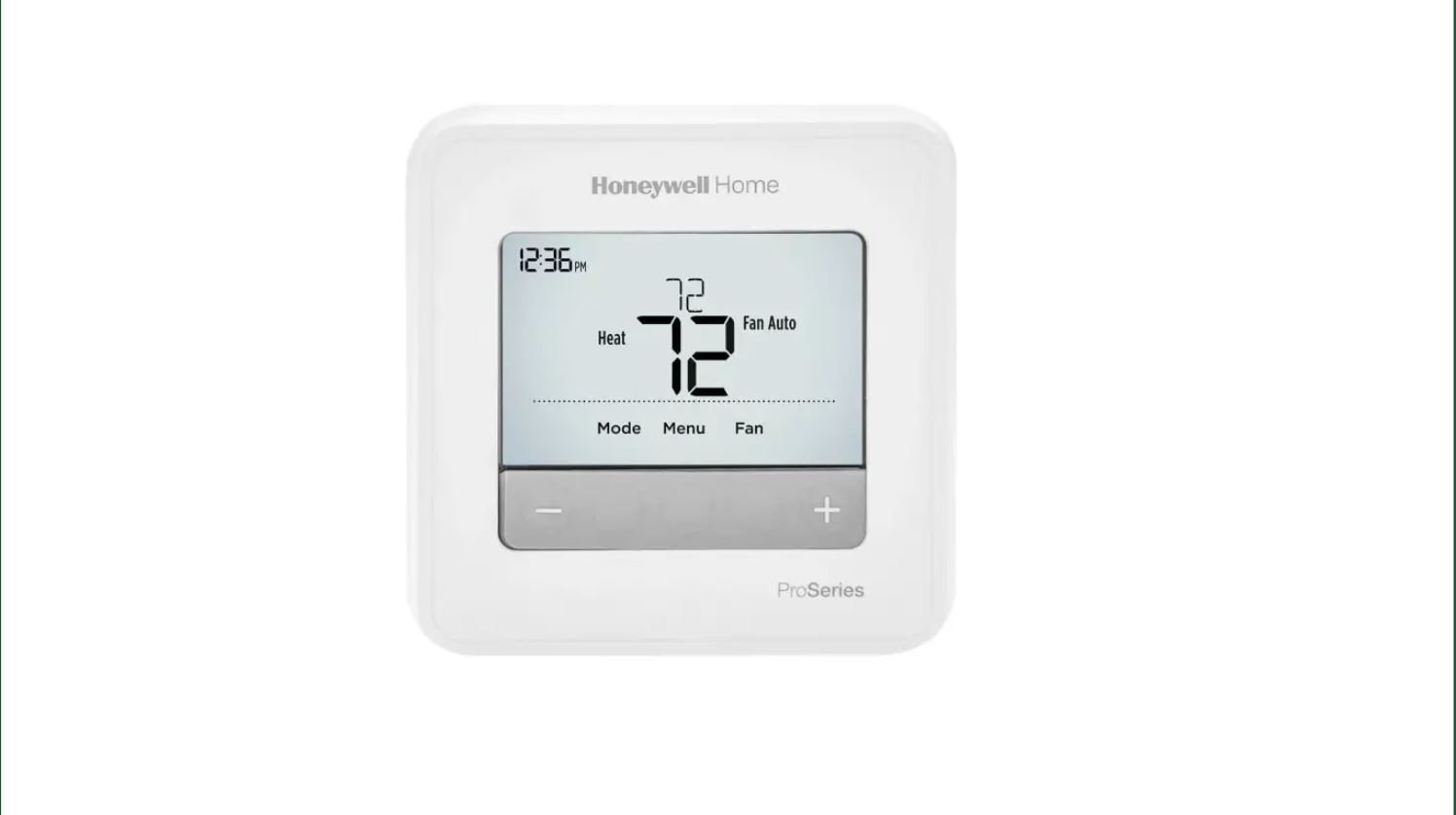Introduction
Power outages can be disruptive and unpredictable, causing inconvenience and potential damage to electronic devices. In such situations, having an uninterruptible power supply (UPS) with a reliable battery backup becomes essential. UPS batteries provide a temporary power source when the main power supply is interrupted, ensuring that critical systems and devices can continue to function smoothly.
Understanding how long a UPS battery will last during a power outage is important for ensuring uninterrupted power supply and making necessary provisions. However, there are several factors that can affect the battery life and the duration for which it can sustain power. By considering these factors, users can make informed decisions and effectively manage their power backup needs.
Factors such as battery capacity, power load, battery age, and environmental conditions have a significant impact on the duration for which a UPS battery can provide power. Each of these factors plays a vital role in determining how long the battery can sustain power during an outage. It is important for users to consider these factors and make adjustments accordingly to optimize their UPS battery performance.
In this article, we will explore the various factors that affect UPS battery life and how they influence the duration of backup power. We will also discuss the different types of UPS batteries and power outages, as well as provide tips on how to calculate UPS battery runtime and extend the lifespan of the battery. By the end of this article, you will have a good understanding of how to maximize the efficiency and reliability of your UPS battery during power outages.
Factors that Affect UPS Battery Life
Several factors can influence the lifespan and performance of a UPS battery. Understanding these factors is crucial for maintaining an optimal power backup system. Let’s take a closer look at the key factors that affect UPS battery life:
- Battery Capacity and Runtime: The capacity of a UPS battery refers to the amount of electrical energy it can store. This capacity is measured in volt-ampere hours (VAh) or ampere hours (Ah). The higher the battery capacity, the longer it can provide power during an outage. Additionally, the runtime of the battery depends on the power load it is connected to. Higher power loads will drain the battery faster, reducing the overall runtime.
- Power Load and Battery Drain: The power load connected to the UPS has a direct impact on the battery drain rate. Higher power loads draw more current from the battery, reducing its runtime. It is essential to calculate the power load accurately and ensure that the UPS is appropriately sized to handle the load. Overloading the UPS can lead to excessive battery drain and a shorter lifespan.
- Age of the Battery: The age of the UPS battery is a critical factor in determining its performance and longevity. Over time, the battery’s capacity diminishes, reducing its runtime during outages. Regular battery replacements are essential to maintain optimal performance. Most UPS batteries have a lifespan of 3-5 years, depending on the usage and environmental conditions.
- Environment and Operating Conditions: UPS batteries are sensitive to temperature and humidity levels. Extreme temperatures can accelerate battery deterioration, while high humidity can cause corrosion. It is important to ensure that the UPS is operating in a cool and dry environment to maximize battery life. Additionally, proper ventilation is crucial to dissipate heat generated by the battery during charging and discharging.
By considering these factors, users can make informed decisions and take necessary steps to extend the lifespan of their UPS batteries. Regular maintenance, including monitoring the battery health, performing periodic capacity tests, and avoiding extreme operating conditions, can significantly improve battery performance and reliability.
Battery Capacity and Runtime
The capacity of a UPS battery is a significant factor in determining how long it can sustain power during a blackout. Battery capacity is usually measured in volt-ampere hours (VAh) or ampere hours (Ah). The higher the capacity, the longer the battery can provide backup power.
To calculate the runtime of a UPS battery, you need to consider the power load it is connected to. The power load refers to the amount of electrical power that is being drawn from the battery. Different devices have varying power requirements and will draw different amounts of power from the battery.
The runtime of a UPS battery can be estimated using a simple calculation. Divide the battery capacity (in VAh or Ah) by the power load (in watts) to get an approximate runtime in hours. For example, if your UPS battery has a capacity of 1000VAh and the power load connected to it is 500 watts, the estimated runtime would be 2 hours (1000VAh ÷ 500 watts = 2 hours).
It’s worth noting that the runtime calculation assumes that the power load remains constant and that the battery is fully charged. In real-life scenarios, fluctuations in the power load and the battery’s charge level can affect the actual runtime. For instance, if the power load increases, the battery will drain faster, resulting in a shorter runtime.
In addition to the power load, the battery’s efficiency also plays a role in determining the runtime. The efficiency of a UPS battery refers to the percentage of power that can be delivered from the battery compared to its actual capacity. The efficiency is typically affected by various factors, including the battery chemistry, age, and temperature. It is important to consider the efficiency of the battery when estimating the runtime, as a lower efficiency will result in a shorter actual runtime than the calculated value.
To maximize the runtime of a UPS battery, it is advisable to minimize the power load connected to it. Using energy-efficient devices, reducing unnecessary power consumption, and implementing power-saving measures can help extend the battery’s runtime during blackouts. Regularly checking the battery’s capacity and replacing it when necessary is also crucial for maintaining optimal performance and ensuring a reliable power backup system.
Power Load and Battery Drain
The power load connected to a UPS has a direct impact on the battery drain rate and, consequently, the runtime during a power outage. The power load refers to the amount of electrical power that devices connected to the UPS draw from the battery. Understanding the relationship between power load and battery drain is crucial for optimizing the UPS battery’s performance.
When devices draw power from the UPS battery, the battery undergoes discharge to supply the required electricity. The rate at which a battery drains is directly proportional to the power load. Higher power loads will drain the battery faster, resulting in a shorter runtime. Therefore, it is vital to properly assess and manage the power load to ensure an extended backup power duration.
To calculate the approximate runtime of a UPS battery based on the power load, you need to consider the power load in watts and the battery capacity in volt-ampere hours (VAh) or ampere hours (Ah). Divide the battery capacity by the power load to determine the estimated runtime. For example, if the battery capacity is 1000VAh and the power load is 500 watts, the estimated runtime would be 2 hours (1000VAh ÷ 500 watts = 2 hours).
It’s important to note that the power load can vary during a power outage. Some devices may consume more power when starting up or during high-demand operations. This spike in power load can significantly affect the battery drain rate and, consequently, the runtime. Additionally, adding or removing devices from the UPS during an outage can also impact the power load and battery drain rate.
To optimize the UPS battery’s performance, it is recommended to evaluate and manage the power load accordingly. Avoid overloading the UPS by connecting devices that exceed its capacity. Regularly assess the power requirements of the devices connected to the UPS and consider spreading the load across multiple UPS units if necessary.
Implementing power-saving measures can also help reduce the overall power load. This includes turning off or placing devices in sleep mode when they are not in use, using energy-efficient devices, and implementing power management settings on connected equipment.
By effectively managing the power load and implementing power-saving practices, users can extend the runtime of their UPS batteries and ensure reliable backup power during a power outage.
Age of the Battery
The age of a UPS battery is an important factor that influences its performance and lifespan. Over time, batteries naturally deteriorate, leading to a reduction in their capacity and runtime during power outages. Understanding the impact of battery age is crucial for maintaining an effective power backup system.
UPS batteries typically have a lifespan of 3 to 5 years, although this can vary depending on factors such as usage and environmental conditions. As the battery ages, its ability to store and deliver electrical energy diminishes. This results in a shorter runtime and decreased reliability during power outages.
Regular monitoring and assessment of the battery’s age is essential for proactive maintenance. When a UPS battery reaches the end of its lifespan or shows signs of significant degradation, it is vital to replace it promptly to ensure uninterrupted power supply. Neglecting to replace an old or failing battery can lead to a complete loss of backup power when it is needed most.
There are several indicators that can help determine the age and condition of a UPS battery. One common method is to check the battery’s date of manufacture, which can be found on the battery itself or its documentation. However, it is important to note that the actual age of a battery may differ from its manufacturing date if it has been in storage for an extended period before being put into use.
Another way to assess battery age is through regular capacity testing. This involves fully charging the battery and then discharging it to measure its actual capacity. By doing this periodically, users can identify any significant capacity degradation and plan for a battery replacement when necessary.
It’s worth noting that even with proper care and maintenance, UPS batteries will eventually reach the end of their usable lifespan. As they age, the risk of performance issues and unexpected failures increases. Regularly monitoring the battery’s age and condition, along with considering its reliability during critical power outages, is crucial for ensuring the overall effectiveness of the UPS system.
By replacing old batteries in a timely manner, users can maintain a reliable power backup solution and mitigate the risk of power interruptions that can lead to data loss, equipment damage, or disruption to critical operations.
Environment and Operating Conditions
The environment and operating conditions in which a UPS battery is installed and maintained play a significant role in its performance and lifespan. UPS batteries are sensitive to various factors, and ensuring optimal conditions can help maximize their efficiency and longevity.
One crucial factor to consider is temperature. UPS batteries function best within a specific temperature range. High temperatures can accelerate chemical reactions within the battery, leading to faster degradation and reduced capacity. On the other hand, extremely low temperatures can impede the battery’s ability to deliver power effectively. It is important to keep the operating environment within the recommended temperature limits specified by the manufacturer to ensure optimal battery performance.
Humidity levels also affect UPS battery performance. High humidity can cause corrosion and damage to the battery contacts and terminals, leading to reduced electrical conductivity and a shorter lifespan. It is advisable to maintain a dry environment and avoid exposing the battery to excessive moisture.
Proper ventilation is another critical aspect of maintaining the battery’s health. UPS batteries generate heat during operation, especially during charging and discharging cycles. Inadequate ventilation can lead to heat buildup, which can accelerate battery deterioration. Ensure that the UPS system is placed in a well-ventilated area, allowing for efficient heat dissipation.
Regular maintenance is essential for UPS batteries, especially when it comes to the cleanliness of the battery terminals. Built-up dirt and corrosion on the terminals can hinder the flow of electricity and lead to increased resistance. Cleaning the terminals regularly using appropriate methods and materials recommended by the manufacturer can help maintain optimal electrical conductivity and prolong battery lifespan.
In addition to the physical environment, the operating conditions of the UPS system also impact the battery’s performance. Excessive cycling (frequent power outages followed by recharging) can shorten the battery’s life expectancy. Minimizing unnecessary power outages through stable and reliable electrical infrastructure can help reduce the strain on the battery.
Implementing a regular maintenance program, such as inspecting the battery and ensuring proper ventilation, can aid in identifying and rectifying potential issues early on. Following the manufacturer’s guidelines for installation, operation, and maintenance is crucial for maximizing the lifespan and efficiency of UPS batteries.
By creating an optimal environment and maintaining appropriate operating conditions, users can prolong the life of their UPS batteries, ensuring reliable backup power during critical situations.
Types of UPS Batteries
There are several types of batteries commonly used in UPS systems. Each type has its own characteristics in terms of performance, lifespan, and cost. Understanding these battery types can help users choose the most suitable option for their specific needs.
- Lead-Acid Batteries: Lead-acid batteries are the most commonly used type in UPS systems. They are known for their reliability and relatively low cost. There are two main subtypes of lead-acid batteries: valve-regulated lead-acid (VRLA) batteries and flooded lead-acid (FLA) batteries. VRLA batteries are maintenance-free and sealed, making them ideal for applications where regular maintenance is not feasible. FLA batteries, on the other hand, require periodic maintenance in terms of adding distilled water to the cells.
- Lithium-Ion Batteries: Lithium-ion (Li-ion) batteries have gained popularity in recent years due to their high energy density and longer lifespan compared to lead-acid batteries. They are also lighter and more compact, making them suitable for UPS systems with space constraints. Li-ion batteries offer faster recharge times and better efficiency, resulting in shorter downtime during power outages. However, they tend to be more expensive upfront.
- Nickel-Cadmium Batteries: Nickel-cadmium (Ni-Cd) batteries are known for their durability and wide temperature tolerance. They can withstand extreme temperatures and have a long cycle life, making them suitable for harsh environments. Ni-Cd batteries are rechargeable and require little maintenance. However, they have a lower energy density compared to lead-acid and lithium-ion batteries, which means they may have a larger physical footprint for a given capacity.
- Nickel-Metal Hydride Batteries: Nickel-metal hydride (Ni-MH) batteries are less commonly used in UPS systems compared to other types. They have a higher energy density than Ni-Cd batteries but lower than lithium-ion batteries. Ni-MH batteries are rechargeable, have a longer lifespan compared to Ni-Cd batteries, and are more environmentally friendly. However, they are less efficient and have a higher self-discharge rate.
Each battery type has its own advantages and considerations, and the choice depends on factors such as cost, performance requirements, available space, and maintenance considerations. Consulting with a UPS specialist or considering the manufacturer’s recommendations can help determine the most suitable battery type for a specific UPS system.
It’s essential to carefully evaluate the specific needs and requirements of the application to ensure that the chosen battery type can meet the expected performance and runtime during power outages. Regular monitoring, maintenance, and timely replacement of UPS batteries are necessary irrespective of the type to ensure reliable backup power when it is needed.
Types of Power Outages
Power outages can occur for various reasons and can have different durations and impacts. Understanding the different types of power outages is crucial for effectively planning and managing a UPS backup system. Let’s explore some common types of power outages:
- Planned Power Outages: These outages are scheduled in advance by the utility companies for maintenance, repairs, or upgrades to the electrical infrastructure. Planned outages are typically announced beforehand, allowing users to prepare and activate their UPS systems to ensure uninterrupted power during the outage.
- Unplanned Power Outages: Unplanned outages occur unexpectedly due to factors such as equipment failure, severe weather conditions, accidents, or natural disasters. These outages can range from a few minutes to several hours or even days, depending on the severity of the issue and the time required for restoration.
- Intermittent Power Outages: Intermittent outages are characterized by recurring interruptions in the power supply. These interruptions can be brief and occur repeatedly over a short period. They can be caused by faulty electrical connections, faulty equipment, or grid instability. Intermittent outages can be particularly challenging to manage as they can disrupt the functioning of devices and systems connected to the UPS.
- Surges and Voltage Fluctuations: Power surges are sudden increases in voltage, usually lasting for microseconds. Surges can result from lightning strikes, equipment malfunctions, or sudden power restoration after an outage. Voltage fluctuations, on the other hand, refer to variations in voltage levels that can occur during normal operation. Both surges and voltage fluctuations can pose a risk to electronic devices and can be mitigated by using a UPS with surge protection capabilities.
Each type of power outage presents unique challenges and requires specific backup strategies. Understanding the nature of the power outage and its potential impact on connected devices is crucial for determining the appropriate capacity, runtime, and features required from a UPS system.
Properly sizing the UPS system, considering factors like expected runtime, power load, and anticipated duration of outages, can help ensure that critical systems and devices remain operational throughout the outage. It is also important to regularly test the UPS system to verify its functionality and effectiveness in handling different types of power outages.
By considering the different types of power outages and implementing the appropriate UPS backup solutions, users can minimize the impact of power interruptions and maintain essential operations during critical situations.
Calculating UPS Battery Runtime
Calculating the runtime of a UPS battery is crucial for estimating how long it can sustain power during a blackout. By understanding the factors involved in this calculation, users can determine the appropriate battery capacity and plan for uninterrupted power supply. There are a few key steps to consider when calculating UPS battery runtime:
- Determine the battery capacity: The capacity of a UPS battery is typically measured in volt-ampere hours (VAh) or ampere hours (Ah). Refer to the manufacturer’s specifications or the UPS system documentation to find the battery capacity.
- Assess the power load: Calculate the total power load that will be connected to the UPS during a power outage. This refers to the sum of the power requirements of all devices that will be powered by the UPS. The power load is typically measured in watts (W).
- Convert power load to VA: Convert the power load from watts to volt-amperes (VA) if necessary. In most cases, the power load is already provided in VA, but if it’s given in watts, you can often assume a power factor of 0.7 to convert it to VA (VA = watts / power factor).
- Divide battery capacity by power load: Divide the battery capacity by the power load (in either VA or watts) to determine the estimated runtime in hours. This calculation provides an approximation of the time the battery can sustain the connected devices during a power outage. Keep in mind that this calculation assumes a steady power load and a fully charged battery.
It’s important to note that the actual runtime may vary due to factors such as fluctuations in the power load, battery efficiency, and the battery’s state of charge. For a more accurate estimate, considering factors such as the battery’s age, temperature, and efficiency can help refine the calculation.
Additionally, it’s worth mentioning that some UPS systems provide software or tools that can assist in estimating battery runtime based on the specific configuration and usage patterns of the system. Utilizing these tools can provide a more precise estimation of battery runtime.
Regularly monitoring the battery’s runtime and conducting periodic capacity tests can help ensure that the battery is functioning optimally and providing the expected backup power. If the runtime falls below acceptable levels, it may be necessary to consider upgrading the UPS system or replacing the battery to meet the desired runtime requirements.
By properly calculating the UPS battery runtime and taking into account variables that can affect the runtime, users can make informed decisions to ensure reliable backup power and minimize disruptions during power outages.
Tips for Extending UPS Battery Life
Extending the lifespan of a UPS battery is essential for ensuring reliable backup power and reducing the need for frequent replacements. Here are some tips to help prolong the life of a UPS battery:
- Properly size the UPS system: Ensure that the UPS system is appropriately sized for the power load it will be supporting. Overloading the UPS can lead to excessive battery drain and shorten the battery’s lifespan. Consult with a UPS specialist to determine the optimal UPS capacity for your specific needs.
- Ensure proper ventilation: Good airflow and ventilation around the UPS system are crucial for dissipating heat generated during battery charging and discharging cycles. Proper ventilation helps prevent excessive heat buildup, which can accelerate battery deterioration. Ensure that the UPS is installed in a well-ventilated area and free from any obstructions.
- Maintain recommended temperature and humidity levels: UPS batteries perform best within a specific temperature range. Avoid exposing the batteries to extreme temperatures, as high temperatures can accelerate battery degradation. Additionally, monitor and control humidity levels to prevent corrosion and damage to the battery terminals.
- Perform regular battery inspections: Routinely inspect the UPS battery for any signs of damage or corrosion. Check for loose connections, leaks, or bulging on the battery casing. Promptly address any issues discovered during inspections to prevent further damage or compromised performance.
- Implement regular battery testing: Conduct regular capacity tests to assess the health and performance of the UPS battery. These tests involve fully charging the battery and then discharging it to measure its actual capacity. Regular testing helps identify any significant capacity degradation and allows for timely replacement when needed.
- Implement proper charging practices: Follow the manufacturer’s recommendations for charging the UPS battery. Overcharging or undercharging the battery can lead to reduced capacity and shorter lifespans. Ensure that the UPS is charging the battery correctly and that the charging process is properly managed.
- Consider temperature compensation: Some UPS systems offer temperature compensation features that adjust the charging voltage based on the battery’s temperature. This helps optimize the charging process and extend battery life by preventing overcharging or undercharging in different temperature conditions.
- Schedule regular maintenance: Develop a maintenance schedule for inspecting and servicing the UPS system, including the battery. Regular maintenance activities such as cleaning battery terminals, tightening connections, and checking for proper grounding can help ensure optimal battery performance and longevity.
- Implement proper storage practices: If the UPS system is not in use for an extended period, follow the manufacturer’s guidelines for proper battery storage. This may involve maintaining the battery charge level within a specific range and storing the battery in a cool, dry location.
By following these tips, users can significantly extend the lifespan of a UPS battery, reduce the risk of unexpected failures, and ensure continuous backup power when it is needed most.
Conclusion
A UPS battery is a crucial component of a reliable power backup system, ensuring uninterrupted power supply during outages. By understanding and considering the factors that impact UPS battery life, users can make informed decisions to optimize their UPS system’s performance and prolong the battery’s lifespan.
Factors such as battery capacity, power load, battery age, and environmental conditions all play a role in determining how long a UPS battery can sustain power during a blackout. Understanding these factors helps users properly size their UPS systems, calculate battery runtime, and anticipate backup power needs.
Regular monitoring, maintenance, and timely replacement of UPS batteries are essential to ensure reliable power backup. By following practices such as ensuring proper ventilation, maintaining recommended temperatures and humidity levels, performing regular battery inspections and testing, and implementing proper charging practices, users can maximize the efficiency and lifespan of their UPS batteries.
Additionally, understanding the different types of power outages and their potential impacts allows users to select the most suitable UPS system and backup strategy for their specific needs.
By considering these tips and investing time and effort into maintaining and optimizing their UPS battery, users can minimize the risk of power interruptions that can lead to data loss, equipment damage, or disruption to critical operations.
In summary, taking a proactive approach to UPS battery management and understanding the factors that impact battery life are crucial for ensuring a reliable power backup system. By implementing the recommendations outlined in this article, users can extend the lifespan of their UPS batteries and maintain uninterrupted power during critical situations.







